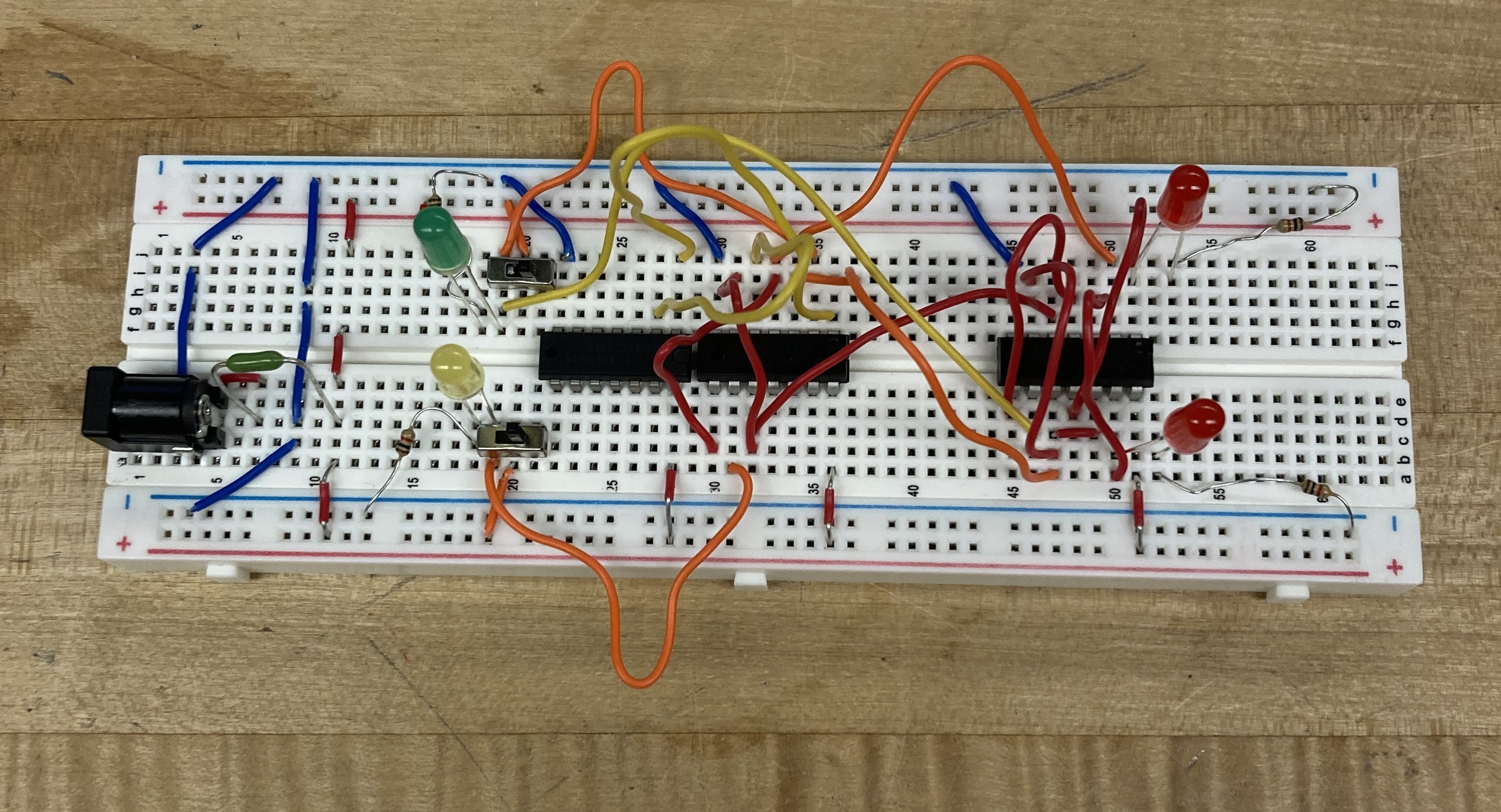Breadboard Edge-Triggered D Flip-Flop

Breadboard Edge-Triggered D Flip-Flop
Purpose of the Assignment:
This lab immerses you in hands-on digital logic design by having you build two fundamental circuits on a breadboard: a 9-stage ring oscillator to measure the propagation delay of discrete inverter gates, and an edge-triggered D flip-flop constructed from basic logic ICs. Through careful wiring, multimeter checks, and oscilloscope measurements, you’ll quantify real-world gate delays and observe how signal transitions propagate through a feedback loop. In the flip-flop exercise, you’ll implement and verify positive or negative edge triggering using minimal NAND/NOR gates or latch ICs, driving LEDs to indicate input and output states. Together, these tasks deepen your understanding of timing constraints, circuit layout best practices, and the dramatic convenience FPGAs offer compared to manual breadboarding.